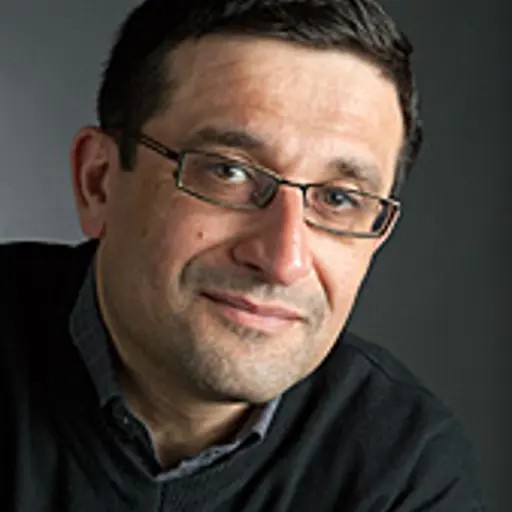Course syllabus adopted 2021-02-26 by Head of Programme (or corresponding).
Overview
- Swedish nameKonstruktionsteknik
- CodeACE030
- Credits4.5 Credits
- OwnerTKATK
- Education cycleFirst-cycle
- Main field of studyArchitecture and Engineering, Civil and Environmental Engineering
- DepartmentARCHITECTURE AND CIVIL ENGINEERING
- GradingTH - Pass with distinction (5), Pass with credit (4), Pass (3), Fail
Course round 1
- Teaching language Swedish
- Application code 46128
- Maximum participants50
- Open for exchange studentsNo
- Only students with the course round in the programme overview.
Credit distribution
Module | Sp1 | Sp2 | Sp3 | Sp4 | Summer | Not Sp | Examination dates |
|---|---|---|---|---|---|---|---|
| 0118 Examination 4.5 c Grading: TH | 4.5 c |
|
In programmes
Examiner
 Mohammad al-Emrani
Mohammad al-Emrani- Full Professor, Structural Engineering, Architecture and Civil Engineering
Eligibility
General entry requirements for bachelor's level (first cycle)Applicants enrolled in a programme at Chalmers where the course is included in the study programme are exempted from fulfilling the requirements above.
Specific entry requirements
The same as for the programme that owns the course.Applicants enrolled in a programme at Chalmers where the course is included in the study programme are exempted from fulfilling the requirements above.
Course specific prerequisites
Comprehensive knowledge of the behaviour of structures subjected to loads. Knowledge about important concepts within the area of structural engineering. Understanding of the structural behaviour of basic structural elements of steel, timber and reinforced concrete. Have the skills to design the moment and shear capacity in the ultimate limit state. Furthermore, knowledge and understanding of the mechanical properties of steel, timber and concrete, knowledge and understanding of basic concepts, theories and models in solid mechanics and mechanics. These prerequisites can for example have been obtained in the courses: BMT016 Structures ACE035 Building materials TME275 Mechanics TME300 Solid mechanicsAim
The course aims to provide a deeper understanding of structures and how to design structural elements in steel, wood and reinforced concrete. This is essential knowledge for all Civil engineers who aims to deepen their knowledge in the field of structural engineering.The course is a continuation of the parts that treated the topic structural engineering in the course buildings functions and design; and the course structures. Furthermore, the course shows how mechanics, solid mechanics and building materials can be applied in the field, and provides a general overview of the field in structural engineering. Along with advanced courses in the subject, knowledge needed is gain that engineers need to be able to design, for instance, bridges, houses and foundations to these. The course will provide students with an extension in the topic structures of buildings and facilities.
Learning outcomes (after completion of the course the student should be able to)
Content
The course covers the behaviour of simpler structural elements in steel, wood and reinforced concrete. Specially, columns subjected to axial load, or a combination of axial load and moment are treated. The course also deals with the structural design of connections and
joints such as nail, bolded and welded joints and anchoring of reinforcement. Besides this, the course also treats the behaviour in service limit state. In the course safety philosophy is considered in design; and common various loads and load combinations are considered in the design.
Later applications/deepening:
The course provides the necessary prerequisites for the courses in Structural Engineering in the master's program "Structural Engineering and Building Technology". The course contents are later applied in design and analysis of, for example, house frames and bridges including the foundation of these.
Organisation
Teaching is mainly in the form of theory lectures and exercises where different computational models are demonstrated and practiced to naturally couple theory and application. In the course there is a laboratory, which is part of the progression of the learning sequence scientific methodology, where the calculations are compared with a concrete beam loaded gradually to failure. Learning sequences mathematics, engineering methodology and scientific bases are applied naturally in the course.Literature
Bärande konstruktioner - del 2, Chalmers, Konstruktionsteknik. (In Swedish) Konstruktionsteknik Exempelsamling, Chalmers, Konstruktionsteknik. (In Swedish) Bärande konstruktioner - del 1, Chalmers, Konstruktionsteknik. (In Swedish) Diverse utdrag för kursen Bärande konstruktioner BMT015, Chalmers, Konstruktionsteknik. (In Swedish)Examination including compulsory elements
The course ends with a written exam, including both theory (descriptive) and problem solving (calculations); the examination time is 5 hours. Compulsory attendance is required at the laboratory.The course examiner may assess individual students in other ways than what is stated above if there are special reasons for doing so, for example if a student has a decision from Chalmers about disability study support.
The course syllabus contains changes
- Changes to course rounds:
- 2023-09-04: Examinator Examinator changed from Ignasi Fernandez (fignasi) to Mohammad al-Emrani (sarasa) by Viceprefekt
[Course round 1]
- 2023-09-04: Examinator Examinator changed from Ignasi Fernandez (fignasi) to Mohammad al-Emrani (sarasa) by Viceprefekt